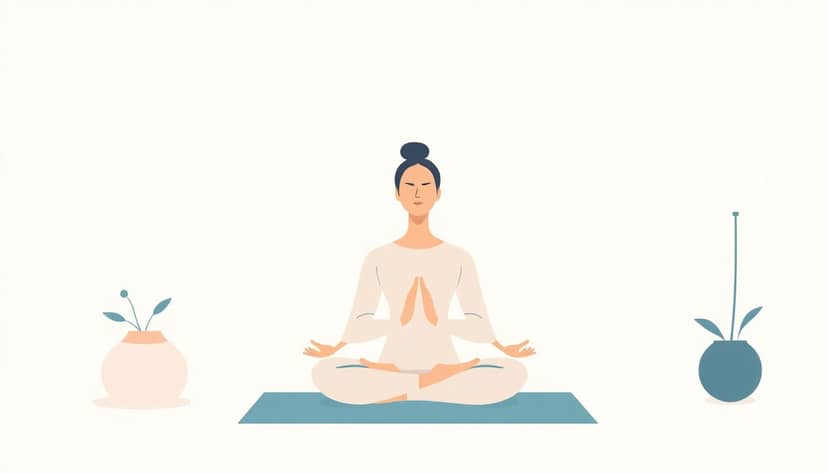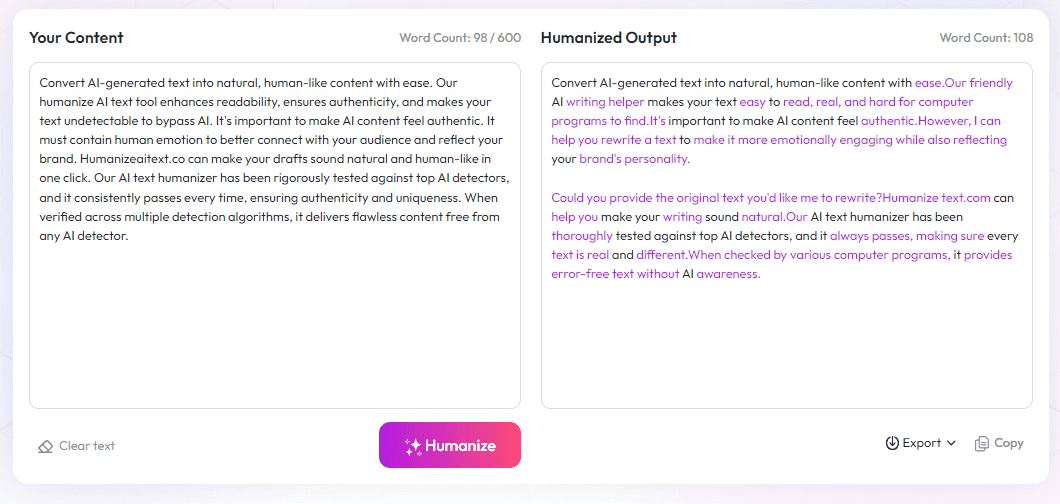Table of Contents
Sometimes, focusing can be tough, especially when our minds keep wandering. Breathing techniques are a simple way to help us stay on track and boost our concentration. Keep reading, and you'll find easy methods like diaphragmatic and equal breathing that can make a real difference. Plus, I’ll give you quick tips to turn these practices into daily habits, making focus feel more natural and less of a struggle.
Key Takeaways
Key Takeaways
- Breathing techniques like diaphragmatic, equal, and 4-7-8 breathing can boost focus, reduce stress, and calm the mind. Practicing them daily helps build mental clarity and resilience.
- Short, regular breathing breaks during work or study keep your mind sharp and prevent fatigue. Using guided apps or setting intentions makes these practices easier to stick with.
- Syncing breath with movement or combining it with mindfulness sharpens focus and keeps distractions at bay. Recognizing when you need a reset can quickly bring your attention back.
- Understanding that slow, rhythmic breathing at about six breaths per minute activates your relaxation response, leading to better concentration and emotional balance.

Step 1: Use Breathing Techniques to Improve Focus
Breathing techniques are a simple, effective way to sharpen your focus and calm your mind. By intentionally controlling your breath, you can activate your body’s relaxation response, making it easier to concentrate. Scientific studies show that regular practice of breathing exercises can significantly reduce stress and anxiety, which often cloud focus. For example, a meta-analysis of 58 trials found that about 75% of breathing interventions effectively lowered stress levels.
To get started, try incorporating breathing techniques into your daily routine, even if just for a few minutes. Deep, mindful breathing can clear mental clutter and improve your ability to stay present. When you breathe intentionally, you signal to your brain that it’s time to focus, helping you ward off distractions that pull your attention away.
Step 2: Practice Diaphragmatic Breathing for Better Concentration
Diaphragmatic, or belly breathing, involves breathing deeply into your abdomen rather than shallowly into your chest. This type of breath activates the parasympathetic nervous system, which promotes relaxation and mental clarity. When you breathe using your diaphragm, you lower your breathing rate and reduce muscle tension—both keys to maintaining focus for longer periods.
To try it, place a hand on your stomach and inhale slowly through your nose, aiming to make your belly rise. Exhale gently and completely. Aim to keep your breathing rate around six breaths per minute, which research indicates is most effective for calming your mind. Practicing diaphragmatic breathing for just five minutes a day can lead to noticeable improvements in concentration and stress relief.
Real-time studies back this up; engaging in diaphragmatic breathing consistently has been linked with lower heart rates and reduced feelings of anxiety, which creates the perfect environment for focus.
Step 3: Try Equal Breathing to Calm Your Mind
Equal breathing, also known as box breathing, involves inhaling and exhaling for the same count—like four seconds in, four seconds out. This simple pattern helps regulate your nervous system and brings a sense of stability, making it easier to focus on tasks at hand.
To practice, breathe in slowly for a count of four, then exhale for the same four counts. Repeat for several minutes, paying close attention to your breath and staying present. This technique is especially handy when stress or anxiety become overwhelming, as it helps ground your thoughts and quiet the mental chatter that distracts you.
Step 4: Use 4-3-8 Breathing to Reduce Stress and Sharpen Focus
The 4-3-8 breathing pattern involves inhaling for 4 seconds, holding for 3 seconds, and exhaling slowly for 8 seconds. This longer exhale encourages your body to relax, decreasing physiological arousal and promoting mental clarity. It’s particularly effective when you need to calm nerves before a big presentation or a study session.
Practice this technique during breaks to reset your focus. The extended exhale helps shift your nervous system into a calmer state, making it easier to concentrate on complex tasks or problem-solving without feeling overwhelmed.
Step 5: Incorporate 4-7-8 Breathing for Relaxation and Focus
Popularized by Dr. Andrew Weil, the 4-7-8 breathing method involves inhaling for 4 seconds, holding your breath for 7, and exhaling for 8. This pattern enhances relaxation while boosting alertness once the calm sets in. It’s perfect for winding down after a busy work period or preparing your mind for focused work. Experiments show that practicing 4-7-8 breathing regularly can also improve overall mental health and mood, contributing to better concentration.
By making this a nightly routine, you can improve your sleep quality too, which is crucial for maintaining sharp focus during the day.
Step 6: Practice Resonant or Coherent Breathing to Balance Your Mind
Resonant or coherent breathing involves maintaining a steady breathing rhythm at around six breaths per minute. This pace synchronizes your heart rate and breathing, promoting better brain function and emotional regulation. Studies suggest that resonant breathing enhances vagal nerve activity, helping you feel calmer and more focused simultaneously.
To do this, breathe in and out smoothly through your nose, paying attention to the flow. Use a timer or a breathing app to keep track of your pace. Over time, this kind of breathing can improve your ability to stay centered, especially during stressful or demanding situations.
Step 7: Make Breathing Exercises a Daily Habit
Consistency is key. Incorporating breathing practices into your daily routine—whether morning, during lunch, or before bed—can lead to lasting benefits. Just a few minutes of intentional breathwork each day can reduce overall stress levels, enhance focus, and boost mental resilience. Think of it as a mental gym session that, with regular use, strengthens your ability to concentrate and stay calm under pressure.
Step 8: Add Breathing Breaks During Work or Study Sessions
Scheduling quick breathing breaks every 20-30 minutes can keep your mind sharp. Use this time to pause, take a few deep diaphragmatic breaths, and reset your focus. This simple habit can prevent mental fatigue and improve your productivity. It’s especially useful during long reading, writing, or problem-solving sessions, helping you stay engaged and avoid burnout.

Step 9: Incorporate Breathing Into Physical Activities for Enhanced Focus
Pairing breathing exercises with movement can boost mental clarity and physical performance. For instance, coordinating breath with yoga or walking helps keep your mind present and reduces distractions. When you focus on your breath during exercise, it can lower cortisol levels and improve overall focus, especially in high-pressure situations. Try inhaling deeply as you begin an activity and exhaling slowly as you finish a set or move to the next task. This approach ensures your body and mind stay synchronized, fostering sustained concentration during demanding tasks.
Step 10: Use Guided Breathing Apps to Stay Consistent
If you're finding it tricky to stick with breathing exercises, guided apps can provide structure and motivation. Tools like (https://www.breatheplusapp.com/) or (https://play.google.com/store/apps/details?id=com.pranayama.app) offer timers, visual cues, and expert guidance to keep your practice on track. Regular use of these apps can reinforce habits, making breathwork a seamless part of your day. Plus, many apps include reminders to prompt you to take strategic breath breaks, helping you integrate focus-training into your routine effortlessly.
Step 11: Set Clear Intentions with Each Breath Session
Before starting your breathing practice, take a moment to decide what you want to achieve—whether it's reducing stress, sharpening focus, or calming nerves. Setting an intention directs your attention and makes each session more purposeful. For example, tell yourself, “Today, I want to clear mental fog,” or “My goal is to stay calm despite distractions.” This simple step can deepen your practice's impact and help you stay committed over time. Think of it as giving your breathwork a mission each day.
Step 12: Combine Breathwork With Mindfulness for Stronger Focus
Blending breathing exercises with mindfulness techniques enhances present-moment awareness. As you breathe, notice sensations in your body, sounds around you, or your thoughts without judgment. This combined approach reduces mental chatter and keeps your focus sharp. Practice mindful breathing by simply observing each inhalation and exhalation, bringing your attention back whenever your mind wanders. Over time, this habit can improve your ability to stay engaged with tasks and respond calmly to interruptions.
Step 13: Recognize the Signs When You Need a Breathing Reset
Learning to identify when your focus wanes is key. Feelings of restlessness, racing thoughts, or physical tension are signs you might benefit from a quick breath reset. When you notice these cues, pause briefly to perform a 1-2 minute breathing exercise. Doing so can re-center your mind and revitalize your concentration. Think of it as giving your brain a "refresh button," so you can return to work or study with clarity and calm.
Step 14: Understand the Science Behind Effective Breath Counts
Research indicates that maintaining a breathing rate of about six breaths per minute yields the most calming effects, engaging your parasympathetic nervous system. Shorter or faster breathing tends to increase alertness temporarily but can lead to hyperventilation and anxiety. Slow, rhythmic breathing with controlled counts helps reduce your respiratory rate consistently, fostering mental stillness. To practice, use a ticking clock or breathing app to keep your inhale and exhale equal, ensuring you're staying within the optimal range for focus.
Step 15: Practice Progressive Breath Control for Long-Term Benefits
As you become comfortable with basic techniques, challenge yourself with longer inhales, holds, and exhales to deepen your control. For example, gradually extending your exhale to double the length of your inhale can promote calmness and resilience. This buildup strengthens your autonomic nervous system over time, making it easier to stay focused during stressful moments. Remember to progress slowly to avoid dizziness or discomfort, and always listen to your body while expanding your breath control skills.
FAQs
Breathing techniques help calm the mind, reduce stress, and increase concentration. Regular practice can improve mental clarity and make it easier to stay focused during work or study sessions.
Practicing breathing exercises daily, ideally for 5 to 10 minutes, helps establish a habit and enhances their effectiveness for improving focus and reducing stress over time.
Yes, taking short breathing breaks during work or study sessions can help reset your focus, reduce tension, and improve overall productivity and mental clarity. Even a few minutes makes a difference.
Techniques like 4-7-8 breathing and diaphragmatic breathing are highly effective for calming the mind, lowering stress levels, and boosting concentration. Choose the one that feels most comfortable for you to practice regularly.



